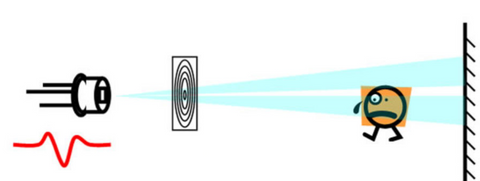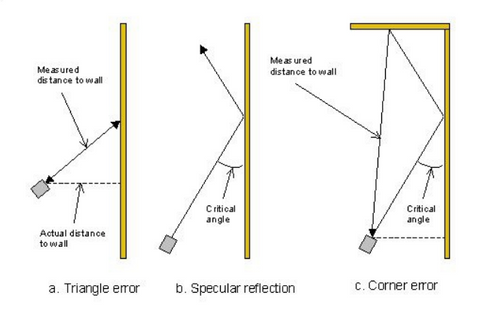Security is emerging all the time, why should motion sensors be an important part of security?It depends on how well the motion sensors work. The main purpose of motion detection is to sense an intruder and send an alert to your control panel, which alerts your monitoring center. Once the alarm is triggered, it will deter intruders and protect the home.Simple and clear alarm system, so that the motion sensor in the safety system has a place.
1.What is Motion Sensor?
A motion sensor (or motion detector) is an electronic device that is designed to detect and measure movement. Motion sensors are used primarily in home and business security systems, but they can also be found in phones, paper towel dispensers, game consoles, and virtual reality systems. Unlike many other types of sensors (which can be handheld and isolated), motion sensors are typically embedded systems with three major components: a sensor unit, an embedded computer, and hardware (or the mechanical component). These three parts vary in size and configuration, as motion sensors can be customized to perform highly specific functions. For example, motion sensors can be used to activate floodlights, trigger audible alarms, activate switches, and even alert the police.
Motion Sensors Are Usually Used in the Following Situations:
Alert you when your family goes out.
Energy is saved by using motion sensors instead of light bulbs in spare rooms
Trigger motion sensors when someone walks through your garden or loitering at your front door.
Alert you when your child enters restricted areas of your home, such as the basement, gym, or medicine cabinet.
Sound an alarm or text you if your pet enters an area where they are not supposed to be.
Triggers an alarm and sends you a message, when an intruder enters your house when no one is there.
2.Types of Motion Sensors
1) Passive Infrared (PIR) Sensors
PIR sensor is mainly composed of the optical system, pyroelectric sensor or infrared sensor, and alarm controller. It absorbs heat and does not emit any energy, but passively receives and detects infrared radiation from the environment. There is infrared human body radiation. Focusing by the optical system makes the pyroelectricity generate emotional electrical signals, and alarms are issued. Residences are most often equipped with PIR sensors.
PIR sensors detect infrared energy released by humans and animals in the form of heat.
PIR Motion detector is very easy obstructed by the variability of heat sources and sunlight, so PIR Motion detector is more suitable for the indoor movement detection within the closed environment.

2) Active Sensors
Active sensors are opposite to passive Motion Sensors. Active sensors refers to the sensor itself in the absorption of energy (light energy and heat energy) after its own transformation output electric energy. For example, solar cells and thermocouples generate electricity from the light and heat absorbed by the sensors, respectively. Therefore, the active sensor does not need an external power supply, and is itself an energy converter.
Active Infra Red Beam motion sensors are mainly installed outside, due to it adopts transmitter and receiver theory for detection.

3) Ultrasonic Sensor
Ultrasonic sensor is a sensor that converts ultrasonic signal into other energy signals (usually electrical signals)
It is very penetrating to liquid and solid, especially in solid where sunlight is not transparent. For example, metal on metal, glass breaking. These sensors are very sensitive (This is only for passive ultrasonic sensors). Such sensors are expensive and prone to false positives.

4) Vibration Motion Sensors
It detects tiny vibrations caused by people moving around a room.Although you can buy them, they are also easy to make at home.Homemade vibration sensors use a small mass on the lever that activates an alarm switch when it vibrates.Homemade motion sensors can work, but they can also be unreliable.

3. Outdoor and Indoor
The more common application scenarios of motion sensors are indoor and outdoor. Outdoors are mainly rover vehicles, animals and people, and indoors are mainly pets and people.
Adjust the motion sensor and send you a message when a car passes by your front door. If your motion sensor is equipped with a camera, you can observe the state of the car, whether it is illegally parked in front of your door, and the state of the car parked to protect your own safety. When a small animal inadvertently passes by your house or enters the garden by mistake, promptly sound the driving siren or send a message to remind you to pay attention to the small animals and the same goes for people.
The indoor is mainly to drive out intruders. When the intruder enters the detection range of the motion sensor, the alarm sound and the message are issued together, which is double protection. Let your neighbors notice the strangeness of your home, and you can also act quickly, such as calling the police.
4. Would You Afraid of Alarms That Cry Wolf?
No thanks. Today’s precision-engineered the motion sensors to detect the unique heat signature of humans. Not pets.So don’t worry about the cry wolf.
When you have a pet at home, I’d like to recommend you to use a pet immune motion detector, which is better.Have to be prevented the cry wolf. It will ignore movement caused by animals weighing less than what you set (in many cases). Most security system motion detectors use passive infrared (PIR) motion detector technology to monitor heat changes in designated areas.
With traditional motion detectors, when your pet enters the covered area, the sensor will trip and cause false alarms. The pet immune motion detector will ignore the motion caused by the animal, thereby reducing the possibility of false alarms. Features vary by manufacturer and model, but can include optional sensitivity for pets weighing up that you set, and can be set to ignore one large pet (such as an adult dog) or a few small pets (such as Cat).
5. Installation Motion Sensor
The most common type of motion sensor used is the passive infrared sensor, also known as the PIR sensor.The range of motion sensors is limited, so if the area of your home is large, you need to place multiple sensors in your home, especially in areas where people often move, such as hallways, staircases, living rooms and bedrooms. The PIR sensors emit rays designed to detect heat.The light of the sensor is fan-shaped, so it is generally concentrated near the sensor, and the farther the sensor is, the weaker the sensitivity. At the same time, light is not penetrating and cannot pass through walls or furniture to detect heat, so it is also important to place the sensor where there is no obstruction to the light.
1) Choose a Good Installation Location
The best installation location will not only save you time and money, but the motion sensor will also maximize your work efficiency.
2) Installing in the Everyone Would Through
For example, a corridor in a home, a bedroom that an intruder will go to, a study, or an intersection that everyone in the family will pass through.
3) Pick a Hidden And Empty Corner
Look for a corner to see the entire living room, or the corridor, the room too. The intruder may not be able to observe the motion sensor in the corner, knowing that the alarm sounded, it has a deterrent effect, and finally fled. If he has observed it, he may not dare to act rashly and break in without permission, because he does not know where there will be other motion sensors......
4) Six to Eight Feet Tall
It is best to place the motion sensor at a height of six to eight feet. If it is too low, there will be a blind spot and no intruder will be found.
5) Basement and Garage
Basements and garages are places where intruders often pass because it is dark and it is easy to avoid some of your installations. The basement is relatively empty, and the vision is relatively wide, and it is easy to capture moving objects. The same is true for the garage, but the garage should avoid places that are easy to heat up, where the motion sensor will cause false alarms.
Some Places You Should not Place:
1.The back of the door: Once the door is pushed open, the detection position will be shifted, and the intruder may not be detected.
2.Above the stairs: Once your pet walks up the stairs, it will approach the motion sensor, causing false alarms.
3.The back of valuable objects: The motion sensor may not detect moving objects because they are blocked, unless the intruder moves after the theft.
When deciding where to place each sensor, make sure they are at least 10 feet away from bright windows, radiators, and heating vents, as abrupt changes in temperature or HVAC-related airflow may trigger false alarms.
6. Installation
There are several types of installation motion sensors:
1.Professional staff will come to install. For example the Vivint motion detector, one of our Smart Home Pros will provide custom installation to make sure the job is done right.
2.DIY: motion sensor kit should come with some instructions and mounting hardware. If you know how to use a screwdriver, you can install a motion sensor.
Some have 3M glue, which can be peeled off directly and pasted where you need it.
7. Final Thought
Hopefully this blog has really helped you get a deeper understanding of the Motion Sensor, and how to properly install your sensors so they can do their job. For help researching your home security options, check out our article on the best home security systems.

